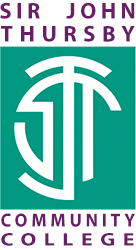Topic 2 Year 9 physics
| Physics | |||
| Topic | Waves 2 | ||
| No of lessons | 10 | ||
| When is it happening | Term 2 | ||
| What will students learn | How to describe a physical model of a transverse wave that demonstrates it moves from place to place while the material it travels through does not. How to describe the properties of speed, wavelength and reflection in the model relates to transverse waves. How particles move to and fro when some waves travel through a substance. How energy is transferred. That waves of a high amplitude or frequency transfer more energy. They will also learn about how damage can result from certain types of waves and why this occurs. They will begin to learn about the greater Electromagnetic spectrum and start to relate wavelength and frequency with the amount of energy each wave carries. They will learn about how microphones and speakers work and how waves can be used to generate electricity. Students will also learn how to calculate frequency of a wave and the units its is measured in as well as how to calculate wave speed. | ||
| Key Knowledge that students should know at the end of 'Topic' | This is the knowledge that students will meet for the first time in this topic | Students will learn to greater depth about wave effects and wave properties. They must learn about how when a wave travels through a substance, how particles move to and fro, transferring energy in the direction of movement of the wave. They must be able to: Explain the term pressure wave and give examples of pressure waves. Describe the functions of microphones and loudspeakers. Explain how sound waves can be used in cleaning and physiotherapy. Explain how audio equipment converts sound into a changing pattern of electric current. Explain, with examples, how waves of higher amplitude or higher frequency transfer more energy. Explain the uses of differences in frequency to explain the damage done to living cells by light and other waves. Use data to evaluate the effectiveness of using the energy of water waves to generate electricity. Explain how speaker and microphone technology has changed over time. Evaluate different methods of reducing skin damage by UV light. Explain, with examples including light and sound, the differences between longitudinal and transverse waves. Describe how a physical model of a transverse wave shows how the waves moves from place to place, while the material it travels through does not (waves on water as undulations which travel through water with transverse motion; these waves can be reflected, and add or cancel – superposition). Explain, with examples, the meaning of transmission of a wave. Use the wave model to explain observations of the reflection, absorption and transmission of a range of waves and apply the equation: Wave speed (m/s) = frequency (Hz) x wavelength (m). | |
| This is knowledge that students may have met before but will need to deepen their understanding | Pupils learnt about sound and light in year 7 and should be able to recall the two types of waves there are and their features. They should be able to recall how we see and hear using eyes and ears and label key features of the sense organs. They should be able to draw a wave and label its parts as well as be able to draw ray diagrams from reflective surfaces and through transparent medium and explain what rarefraction is and the principles by which light bends. | ||
| Key Skills that students should be able to demonstrate at the end of 'Topic' | This is the skills that students will meet for the first time in this topic | Using the wave equation. Basic algebra | |
| This is skills that students may have met before but will need to develop | Using the wave equation and how to calculate/work out the frequency of a wave. Basic algebra. | ||
| Key vocabulary that students should know and understand | Absorption, kinetic store, pressure wave, microphone, loudspeaker, ultrasound, infrasound, infrared, ultraviolet, wavelength, transmission, superposition, Hertz, ionising. | ||
| The Big Question | What are Wave properties and what are their effects? | ||
|
Key questions that students should be able to answer at the end of the 'Topic' |
What are the different types of waves and how do they transmit energy? | ||
| How can sound waves be used to help us? | |||
| How can some waves damage cells and how can we stop this from happening? | |||
| How can we use Waves to make electricity? | |||
| Wave properties: Explaining echoes , absorption and transmission? | |||
| What is the wave formula? | |||
| What happens when two or more waves come together? | |||
| How do Solar shower and insulated mugs work? | |||
